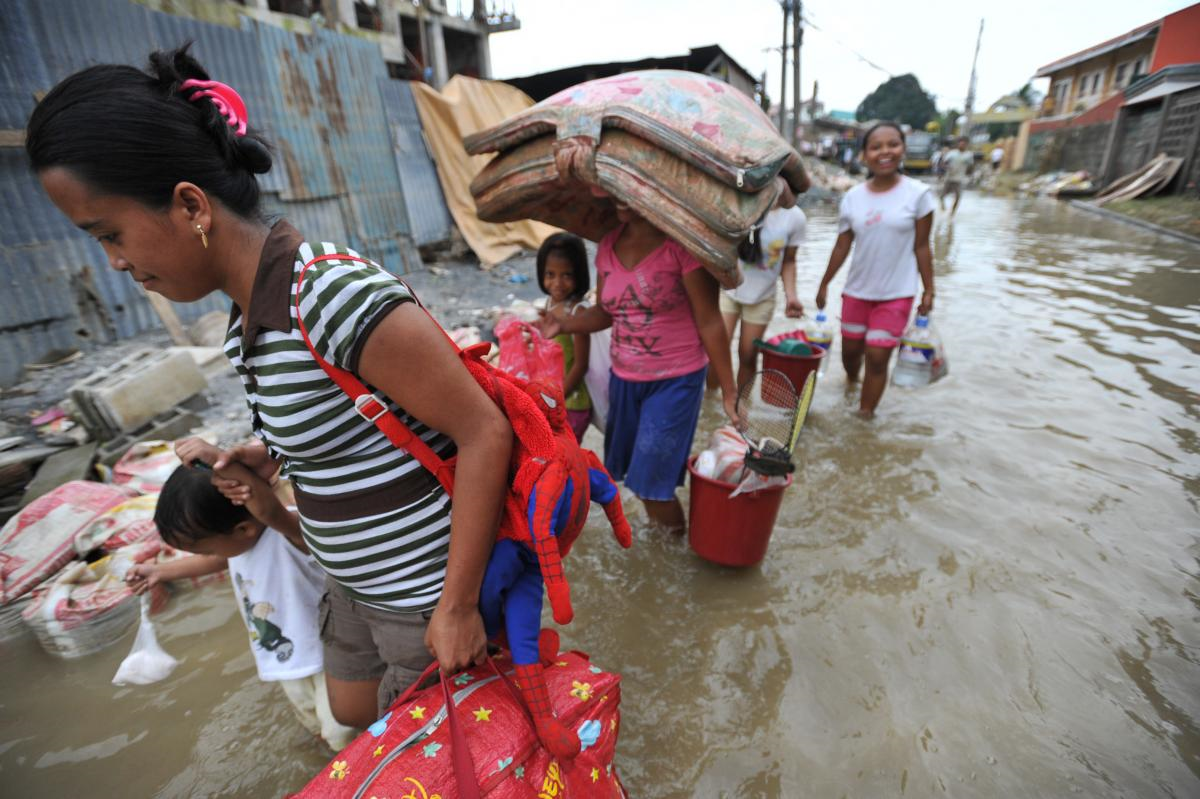New threats to progress: the ADB evaluates its work on disaster prevention and recovery
Dr. Vinod Thomas, director general for Independent Evaluation at the Asian Development Bank (ADB), shares insights from the ADB's recent evaluation of its work responding to natural disasters, both prevention and recovery, linked to Climate Change.
Population growth, people's vulnerability to hazards, and global warming are further driving the rise and risks in hydro-meteorological disasters. This disturbing trend is especially apparent in Asia; four of five cities worldwide classified as at extreme risk are in the region, which accounted for half of the estimated economic cost of disasters over the past 20 years. Floods and landslides are thought to have cost the People's Republic of China some $18 billion in 2010 alone and Thailand an estimated $45 billion in 2011. Typhoon Bopha, which tore across the southern Philippines this month, was yet another heartrending reminder of the human cost of hydro-meteorological disasters.
As the director general for Independent Evaluation at the Asian Development Bank (ADB), I have often talked about climate change, together with poverty and population growth, as factors that have dramatically magnified the impact of natural hazards. Our Special Evaluation Study on ADB's Response to Natural Disasters and Disaster Risk assessed ADB support for disaster prevention and recovery programs from 1995 to 2011. We found that disaster recovery projects have been much more successful than ADB-supported projects overall in the portfolio. ADB's investment in disaster prevention support to its developing member countries has increased gradually, to funding 264 natural disaster interventions worth $10.37 billion. This represented 8% of total lending during the review period. The study also notes that since compiling data for climate change in 2009, ADB's technical assistance on adaptation alone has amounted to $22 million, while the level of investment in mitigation reached $6 billion in 2009 and 2010.
However, most ADB country programs have not treated the growing frequency of natural disasters as a systemic risk to economic growth. Even more worrisome are the low ratings for the sustainability of disaster prevention projects, with only 45% of them rated likely sustainable or better. Many infrastructure projects now include a disaster prevention component (e.g. element of climate proofing for road design) together with other activities. But this also makes it difficult to account for disaster prevention as a separate componen and especially because the disaster prevention component can be just a small part of a large infrastructure project. So this raises the question of whether to count the whole investment as preventive in terms of natural-disaster management. Approvals for projects on disaster recovery still outnumber projects predominantly focused on disaster prevention, of which there were 43 from 1995 to 2011. These accounted for one-third of approvals ($2.19 billion) in the period, compared with two-thirds for disaster recovery. This distribution partly reflects the costly nature of many disaster recovery operations.

The study concludes that, in measuring against stated objectives (i.e., the relevance, responsiveness, and results of ADB support), evaluation needs to carefully assess what kind of support, particularly in infrastructure, will qualify as support intended for disaster prevention. It also makes clear that country demand, especially when expressed by a particular government ministry, may only partly inform ADB strategy.
The official development assistance community can create more demand in countries for disaster risk reduction activities. And for that, ADB needs to integrate climate change and natural disaster programs, and improve capacity in both. Independent Evaluation recommends regular coordination with development partners in providing technical assistance.
But ADB must also take the lead in countries where it does considerable work. ADB has a comparative advantage, as do other multilateral development banks, in conducting policy dialogue. This is an important entry point to change land use and regional economic growth plans. Each country has a different set of agencies responsible for disaster management, and many countries do not have a regular multidonor forum on disaster risk reduction. ADB could identify gaps in national disaster policies and activities more proactively through both internal coordination and aid harmonization. Additional expertise is also required for profiling natural disaster vulnerability zones, managing disaster aftermaths, and increasing funds for disaster risk financing.
Natural disasters represent a new threat to progress and development. A new agenda is needed for tackling the hazards of nature that stresses planning, preparation, and prevention. Most fundamentally, we need to change our mindset on natural disasters from thinking of them as periodic episodes beyond our control to recognizing them as systematic events resulting in part from human actio and hence do more on disaster prevention.
For further information or queries to the ADB special evaluation study, Dr. Tomoo Ueda can be contacted at tueda@adb.org.



